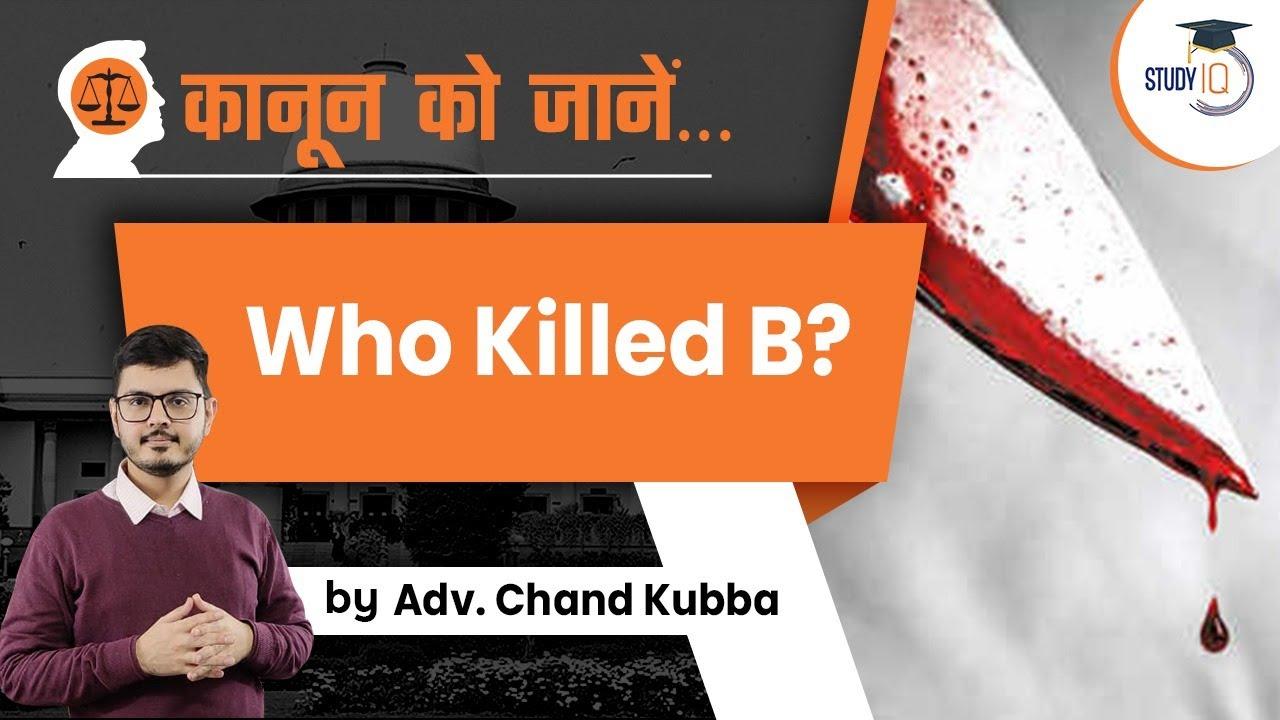- Two Friends, A and B, are playing in the Park. They had a fight and A pushes the B and as a result B falls on the Ground and hits the sickle left unattended by the gardener and dies. What is the liability of A? will he be charged for Murder (302) or Attempt to Murder (307) or Causing Simple Hurt (323)
E.g.
- 1st e.g. –With Intention to kill B, A shoots B and the bullet hits B’s Leg, B is taken to the Hospital in an Ambulance. On his way to the Hospital, Ambulance meets an accident and as a result B Dies. What is the liability of A? will he be charged for Murder (302) or Attempt to Murder (307)?
- 2nd e.g. – With Intention to kill B, A shoots B in his Chest, B is taken to Hospital in an Ambulance. On his way to the Hospital, Ambulance meets an accident and as a result B Dies. What is the liability of A? will he be charged for Murder (302) or Attempt to Murder (307)
Doctrine of causation
- causation means the connection between the conduct of the accused and the injury suffered by the victim.
- It helps to determine the extent of liability that transpires out of a legal wrong on the part of a accused.
- With intention to kill B, A shoots B in chest, B dies of injury, here the action of A is responsible for the murder of B.
‘But for test’
- “but for the accused’s conduct, the injury would not have resulted”.
- Means – if the accused had not performed an act, then the victim would not have suffered the harm by any means at all
- A attempted to kill his wife by adding poison in her drink. But the wife died of a heart attack soon, even before the poison took effect.
- Here on applying “but for” test we find that but for the A’s attempt to kill the Wife by poisoning her, she would still have died owing to the heart attack. Therefore, the A is liable for attempt to murder, but not murder.
- A Covid patient goes to hospital for treatment, but he was sent back home as the doctor was unavailable. He died.
- Hospital was not held responsible. As on applying But for test, one Concludes that even if the patient was not sent home, the patient would have died as first of all doctor was not available, second- the doctors don’t have any medicine to cure the disease immediately.
Novus actus interveniens
- An event that occurs after a party’s improper or dangerous action and before the damage that could otherwise have been caused by the dangerous act, thereby breaking the chain of causation between the original act and the harm to the injured person, is known as an “intervening cause.”
- The presence of an intervening cause can mean that the person who started the chain of events may no longer be considered responsible for damages to the injured person since the original action is no longer the proximate cause.1
- literally means “new intervening act”.
- An essential condition for an act to be novus actus is that such an act must not have been reasonably foreseeable by the defendant.
- A left his horse unattended in the market.
- A child hits the horse with stone and horse starts running wildly in the market street injuring to some people in the market.
- Here the horse owner is held liable for the negligence and causing injuries to the people as the mischief on the part of child is foreseeable.
- Child’s act was not held to be an intervening cause.
In other words-
- Identify the Major or Minor Cause to decide the liability of the accused.
Download | Free PDF






















 WhatsApp
WhatsApp